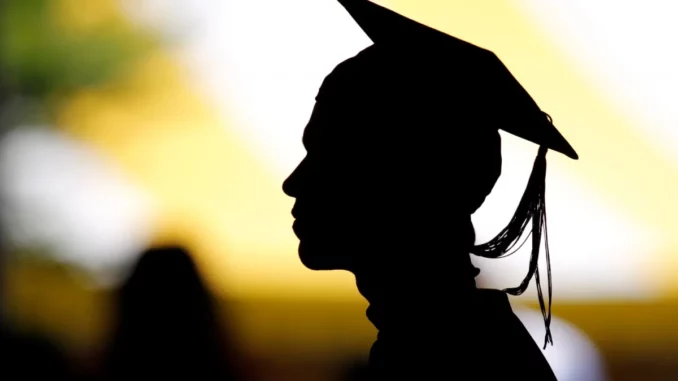The Economist: ‘World’s richest, most productive, most innovative big economy’ leaving its peers ‘in the dust’
China’s leader Xi Jinping sees the United States as a nation in decline. So do many Americans. It’s not surprising, then, that a recent The Economist cover story has commanded so much attention. For in four deeply reported pages, The Economist presents a mountain of evidence to the contrary.
Anxiety over America’s decline, the editors conclude, “obscures a stunning success story – one of enduring but underappreciated outperformance. America remains the world’s richest, most productive and most innovative big economy. Along an impressive number of dimensions, it is leaving its peers further in the dust.”
This challenge to conventional wisdom has energized pundits. The New York Times has run two op-ed commentaries on consecutive days. One, by conservative columnist David Brooks, agrees with The Economist, concluding that American capitalism – for all its faults – “has proved superior to all real-world alternatives.”
The other, by progressive economist Paul Krugman, cautions: “The numbers aren’t really as good as they look, and there are shadows over America that aren’t captured by gross domestic product.”
Agree or disagree with The Economist’s conclusion, its evidence is impressive:
- In 1990, the gross domestic product of the US represented 25% of the world’s total. Despite the rise of China, the US still accounts for 25% of the world’s economic output.
- Compared with its counterparts in the G-7, a group that includes Japan and Germany, the US share is growing. Adjusted for purchasing power, the US accounts for 51% of G-7 GDP, up from 43% in 1990.
- America’s income per person was 24% higher than Western Europe’s in 1990. It is 30% higher today.
- Between 1990 and 2022, labor productivity (output per hour worked) rose 67% in the US, 55% in Europe and 51% in Japan.
- US spending on research and development has risen over the past decade to 3.5% of GDP, well ahead of most countries.
- America spends 37% more on education per pupil than the 23 other rich countries in the Organization for Economic Cooperation and Development – and 34% of Americans have completed tertiary education, a proportion exceeded only by Singapore.
And this is only a partial list. The magazine cites other evidence, including statistics showing Americans are more mobile, start more businesses and have much stronger and deeper financial markets. (The magazine doesn’t mention another American strength: its highly productive agriculture and food system.)
The Economist concedes there are negatives, particularly income inequality. A lot of the growth in US income per capita went to the “ultra-rich,” who the magazine says have done “ultra-well.” At 77 years, Americans’ life expectancy is five years shorter than in other rich countries, in part because America’s poor get poor medical care.
Yet, while the US has the most unequal income distribution in the G-7, The Economist also notes that “a trucker in Oklahoma can earn more than a doctor in Portugal.”
Presidents usually get credit for strong economies but The Economist implicitly criticizes both Biden and Trump, warning that their turn to protectionism and industrial policy risks squandering America’s strengths.
Income inequality and lower life expectancies are among the negatives Krugman plays up. “Do we care,” he asks, “that the rich can afford more and bigger superyachts?” Krugman also argues that, while Europe lags behind the US economically, Europeans enjoy a higher quality of life. Their long vacations give them a better work-life balance.
Unfortunately, in focusing on GDP’s limitations as a measuring rod, Krugman ignores the many other dimensions on which The Economist rates the American economy highly.<
>
<
>
<
>
Moreover, the tradeoff between European and American capitalism is broader than vacations. Brooks calls it “the tension between economic dynamism and economic security.” American capitalism, he says, “has always been tilted toward dynamism.”
And even though this tilt has weakened as US social spending increased, the US economy continues to outperform.
On one thing both Times pundits agree: American society is a mess. In Brooks’s words, “We’ve lived through a wretched political era. The social fabric is fraying in a thousand ways.” No doubt this fraying contributes to the feeling so many have that America is in decline.
There were similar feelings in the 1980s when Japan was on the rise. By the mid-1990s, it was clear those feelings had been overwrought.
Will history repeat itself? Today’s challenges, external and domestic, may be more serious. Still, by pointing out America’s continuing strengths, The Economist has contributed a fresh and helpful perspective.<
>
<
>
<
>
Former longtime Wall Street Journal Asia correspondent and editor Urban Lehner is editor emeritus of DTN/The Progressive Farmer.
This article, originally published on April 2 by the latter news organization and now republished by Asia Times with permission, is © Copyright 2023 DTN/The Progressive Farmer. All rights reserved. Follow Urban Lehner on Twitter: @urbanize




This article is lacking in its macroeconomic analysis.
While it is true that many people still want to come here for what America used to be, they may find that the US is not so much a land of opportunity as it once was. The economic policies of the Biden Administration are driving the US economy into a ditch.
Yes there is a reason the “good news” is from 1990. At that time the US had a manufacturing base that was part of the engine of the economy. NAFTA ended that. We lost good middle class manufacturing jobs. Trump worked to bring back manufacturing jobs, even in the two years he had before the pandemic.
In addition, the citation about where the US stands on education is false and misleading. Thirty countries now outperform the United States in mathematics at the high school level. Many are ahead in science, too. According to the Organization for Economic Cooperation and Development, the millennials in our workforce tied for last on tests of mathematics and problem solving among the millennials in the workforces of all the industrial countries tested. We now have the worst-educated workforce in the industrialized world. Because our workers are among the most highly paid in the world, that makes a lot of Americans uncompetitive in the global economy. And uncompetitive against increasingly smart machines. It is a formula for a grim future.
https://www.edweek.org/policy-politics/opinion-why-other-countries-keep-outperforming-us-in-education-and-how-to-catch-up/2021/05
The economy when Trump was President was booming. People were getting jobs, including Black, Hispanic and other ethnic groups. Even high school dropouts were getting jobs. Companies were competing with each other for employees.
After the pandemic, people in this country had savings, they were ready to get back to work. What did the uniparty in DC do? Their plan under Biden was to remake America.
This is what they’ve done: they’ve paid people not to work.
Two years after the pandemic ended, there are still 2.8 million workers missing from the labor force. Why? A recent study headed by University of Chicago economist Casey Mulligan, “Paying Americans Not to Work,” found that in 24 states, unemployment benefits and Obamacare subsidies for a family of four with no one working are equal to or above national median household income. In three of those states, a family of four with no one working can receive over $100,000 per year in cash and benefits. In 14 states, that number is at least $80,000, which is more than the average salary for a construction worker or an electrician. In other words, two years after the pandemic, we’re still paying people not to work at a time when businesses and our economy desperately need workers.
Two years after the pandemic, people’s savings are now gone, people’s credit is maxed out, inflation is eating away at American workers’ paychecks, and our culture is being devastated by Marxist culture wars and divisiveness.
If you want to read a good article with insightful macroeconomic analysis, and meaningful recommendations for change, you can read it here:
https://imprimis.hillsdale.edu/the-biden-economy-and-how-it-could-be-fixed/
Hmmm. Going back 30 years was needed to support the good new?
The entire article is flawed because it compares the US to Japan and the EU, which is a folly. The rise of China is the real story, not the stagnation of the EU/Japan. The US in 2000 was 28% of global GDP. Today, it’s 24%. The decline isn’t overnight, but it’s constant.
Statistics can be used to say anything, of course; but to cut to the qwick, here’s the best proof that America is declining less than the rest of the world:
https://rumble.com/v2lq614-episode-2703-biden-sends-troops-to-the-border.html
Since the fall of the Berlin Wall, I’ve never seen such eagerness by the people of the world to break out of wherever they are, and to break into the US.